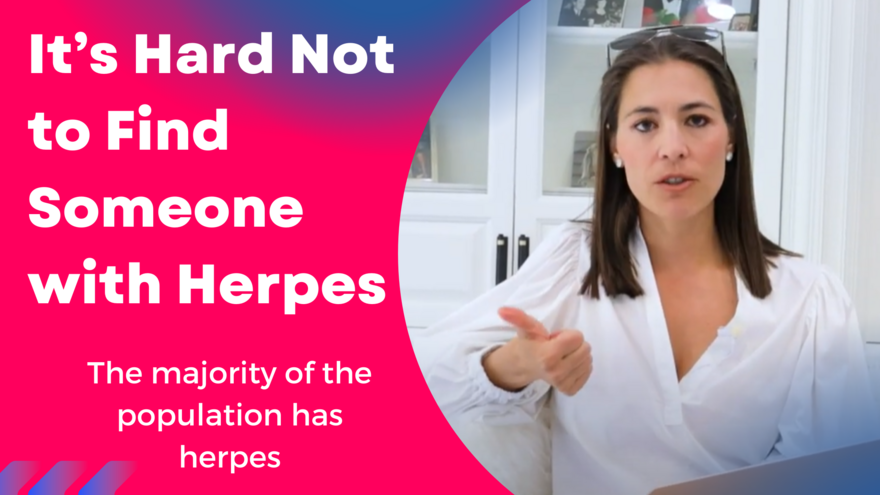It’s Hard Not to Find Someone with Herpes

With herpes being so common it’s actually rare to find someone without it. I hear time and time again from people who are just diagnosed with herpes, or if they haven’t processed their herpes diagnosis, say that their partner should go find someone without herpes. Or when a rejection happens the person is thinking that it's going to be way easier to find someone else without herpes.
Well, the truth is that the majority of the population has herpes. Here me out.
Honestly it’s hard to get an exact number of people living with herpes. Some studies talk about global numbers, some only refer to the US. Some refer to the data with oral herpes and genital herpes, but that doesn’t really help because both types can be oral or genital. Some studies have the data from 0-49 others have it 14 years to 49. I think what happens after 49, does herpes just go away? Lol. And just to make sure it’s clear herpes doesn’t go away.
I found this information from the CDC, stating that there were 572,000 new genital herpes infections in the United States in a single year. Nationwide, 11.9 % of persons aged 14 to 49 years have HSV-2 infection (12.1% when adjusted for age). However, the prevalence of genital herpes infection is higher than that because an increasing number of genital herpes infections are caused by HSV-1. Oral HSV-1 infection is typically acquired in childhood; because the prevalence of oral HSV-1 infection has declined in recent decades, people may have become more susceptible to contracting a genital herpes infection from HSV-1. HSV-2 infection is more common among women than among men; the percentages of those infected during 2015-2016 were 15.9% versus 8.2% respectively, among 14 to 49 year olds. This is possibly because genital infection is more easily transmitted from men to women than from women to men during penile-vaginal sex. Most infected persons may be unaware of their infection; in the United States, an estimated 87.4% of 14 to 49 year olds infected with HSV-2 have never received a clinical diagnosis.
Read more about it here.
There is another article from John Hopkins that says 50 percent to 80 percent of U.S. adults have oral herpes.
And then the WHO says that an estimated 491.5 million people were living with HSV-2 infection in 2016, equivalent to 13.2% of the world’s population aged 15 to 49 years. And 2/3 or 67% of the global population is living with HSV1.
So with all that being said and the different ways to calculate the number of people living with herpes based on their age and so on, I go on the low end and calculate the WHO stats of 13/2% living with HSV2 and 67% living with HSV is about 80% of people are living with herpes.
Let’s stop and think about that for a minute. We have 80% of the population living with herpes. 90% of the people with HSV2 have no clue that they have it and we’re caught up with the idea that we’re all alone? Or that there is someone else out there who doesn’t have it? I mean, yes it’s possible, but 90% of adults have all been exposed to the HSV virus. So this also means that even if someone doesn’t have it today they probably have been exposed to it and most likely will come down with it later. In other words, the idea of trying to find someone who doesn't have herpes will probably be a pretty tough job and unbeknownst to the person who doesn’t think they have it, probably does.
So this is a ton if information and lots of great stuff here about herpes. I have a ebook that talks about what I wish I had known when I was diagnosed. It’s free, you just need to subscribe (we don't spam!) and it will cover a ton of information.


0 comments
Leave a comment
Please log in or register to post a comment